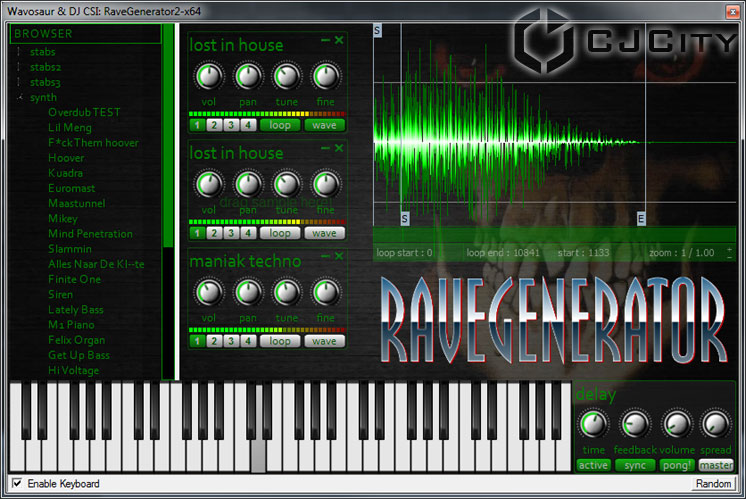
Samij Luchshij Virtualjnij Sintezator Korg
(株式会社コルグ, Kabushiki-gaisha Korugu), founded as Keio Electronic Laboratories, is a Japanese multinational corporation that manufactures electronic musical instruments, audio processors and guitar pedals, recording equipment, and electronic tuners. TRITON/OMS Patch Names of KORG Keyboards 1.0 2016.01.01 / HQX: 388.4KB.
Contents • • • • • • • Firmware [ ] At the end of Q3 2008, Korg released a major update to the M3's operating system, which changes the unit to the 'M3 XPanded'. This update refines many of the functions of the M3, makes minor changes to the, adds four additional sample libraries including a grand piano (EX-USB-PCM03) library, two brass and woodwind libraries (EX-USB-PCM01 & EX-USB-PCM02), a stereo grand piano (EX-USB-PCM04) library, and updates the KARMA to version 2.2 Kay Algorithmic Realtime Music Architecture developed by Stephen Kay (see: ). Korg Komponent System [ ] Korg Komponent System is a unique modular keyboard system devised by Korg that allows the keyboardist to configure their M3 in a multitude of ways. With three different keyboard options Korg explains the system like this: The 61-key model lets you mount a analog modeling synthesizer instead of the M3-M sound generator, the 73-key model lets you mount the M3-M together with a RADIAS-R analog modeling synthesizer, and the 88-key model supports the combination of M3-M and RADIAS-R or even mounting two M3-M units simultaneously.
Of course you can detach the M3-M sound generator and use it as a sound module, giving you great flexibility for constructing the system you need whenever you want. The largest criticisms of the Komponent system are: • Korg seems to have abandoned the idea as only 2 modules (M3 and Radias) were Komponent compatible. • Korg will not sell the keybeds separately. If you bought the M3 as a module, you cannot buy a 61, 73, or 88 key keybed except for on the used market. Korg has released keyboards since the M3 and none take advantage of the Komponent system. Korg M50 [ ].
Korg M50 In 2008, Korg unveiled a new, stripped-down version of the M3, the Korg M50. It runs on the same EDS sound system as the M3, but it has less polyphony, no support for expansion cards and no sampling capabilities. Korg M50 also lacks Karma engine but it still can be used if bought separately and installed on computer. The 88-key version, which featured the RH3 graded hammer-action piano keys, is the lightest 88-key keyboard Korg has ever made. Notable Users [ ] • • • • • • • • • • • of • • See also [ ] • • • • • • • • • References [ ].
Tuning of harp using Korg OT-120 Wide 8 Octave Orchestral Digital Tuner Korg was founded in 1962 in Japan by and as Keio Gijutsu Kenkyujo Ltd. It later became Keio Electronic Laboratories ( 京王技術研究所) because its fledgling offices were located near the train line in and Keio can be formed by combining the first letters of Katoh and Osanai. Before founding the company, Katoh ran a nightclub. Osanai, a graduate and noted accordionist, regularly performed at Katoh's club accompanied by a Sideman rhythm machine. Unsatisfied with the rhythm machine, Osanai convinced Katoh to finance his efforts to build a better one. The company's first product, released in 1963, was an electro-mechanical rhythm device called the Disc Rotary Electric Auto Rhythm machine, Donca matic DA-20.
The name 'Donca' was an onomatopoeic reference to the sound the rhythm machine made. Buoyed by the success of the DA-20, Keio released a solid-state version of the Rhythm machine, the Donca matic DE-20, in 1966. In 1967, Katoh was approached by, an engineer who wanted to build keyboards. Software penangkap sinyal wifi jarak jauh untuk pc richards. Impressed with Mieda's enthusiasm, Katoh asked him to build a prototype and 18 months later Mieda returned with a programmable organ.
Keio sold the organ under the name KORG, created by using the first letter of each founder's name plus 'RG' from their planned emphasis on products targeted for the market (emphasizing the letters R and G in the word 'organ'). Keio's organ products were successful throughout the late 1960s and early 1970s but, concerned about the competition from other big organ manufacturers, Katoh decided to use the organ technology to build a keyboard for the then-niche market.